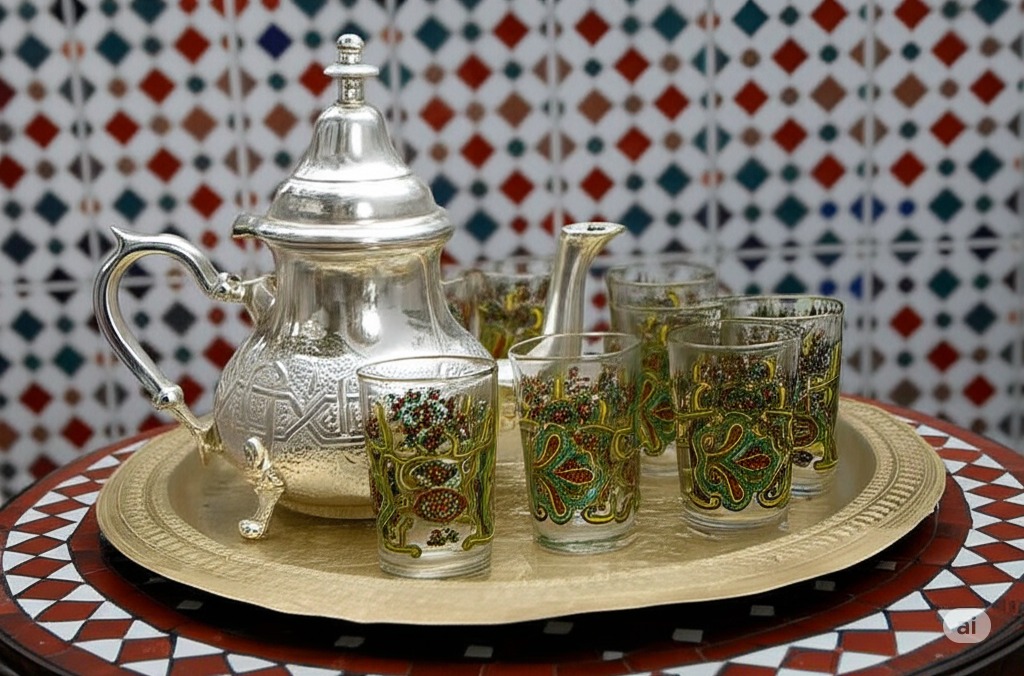
Moroccan Tea Ceremony: Amazing Tradition You Need to Know
When you enter the world of Moroccan hospitality, you’re welcomed into a special tradition. The traditional Moroccan tea is more than a simple welcome. It’s a blend of etiquette, flavors, and warmth.
This cherished custom is full of meaning and steps to follow. The Moroccan tea ceremony offers a unique experience. It teaches us to value the art of hospitality.
Key Takeaways
- Understand the cultural significance of the traditional tea ritual in Morocco.
- Learn the steps involved in preparing and serving Moroccan tea.
- Discover the etiquette and customs surrounding this revered tradition.
- Explore the role of tea in Moroccan hospitality and daily life.
- Gain insight into the symbolism and meaning behind the tea ceremony.
The Cultural Significance of Mint Tea in Morocco
Mint tea is a big part of Moroccan culture, found in social gatherings and daily life. It’s more than a drink; it symbolizes hospitality, friendship, and community. In Morocco, drinking mint tea is a tradition that goes back a long way and is a big part of daily life.
In Morocco, mint tea is everywhere. You’ll find it in homes, markets, and riads. It’s not just for drinking; it’s about making connections and feeling part of a community.
The Role of Mint Tea in Moroccan Hospitality
Mint tea is key in Moroccan hospitality. Guests are welcomed with a smile and a glass of mint tea. This shows respect and makes the guest feel valued. Serving mint tea is seen as a kind act, showing the host’s character.
- Mint tea is a symbol of friendship and community.
- It’s an integral part of Moroccan daily life and social gatherings.
- The preparation of mint tea is a gesture of hospitality and respect.
Mint tea in Morocco is not just a drink. It stands for warmth, generosity, and community. Exploring Moroccan mint tea reveals a rich cultural heritage and its important role in society.
Essential Ingredients for Authentic Moroccan Tea
To make authentic Moroccan tea, you need to pick the right ingredients. You’ll need high-quality tea leaves, fresh mint, and sugar.
Green tea is the base, with Gunpowder tea being a favorite. It has a strong flavor and aroma. Choose tea leaves that are fresh and bright green.
Fresh mint is also key. You can use peppermint or spearmint, but peppermint is traditional. Make sure the mint is fresh and smells good.
Sugar is important too, and it’s added to taste. Moroccan tea is traditionally sweet, so add plenty.
Tips for Sourcing Ingredients
- For authentic Moroccan tea leaves, visit Middle Eastern or African grocery stores or online retailers that specialize in international teas.
- Fresh mint can be found in most supermarkets or grown in your own garden.
- For sugar, you can use either white or brown sugar, depending on your preference.
Choosing the right ingredients will help you make a delicious and culturally rich Moroccan tea.
Traditional Moroccan Tea Sets and Equipment
The traditional Moroccan tea set is key to Moroccan hospitality. It shows the country’s rich culture. When you join a Moroccan tea ceremony, you’re not just drinking tea. You’re diving into a tradition that’s deeply part of Morocco’s history.
A traditional Moroccan tea set has a teapot, tea glasses, and a tray. The teapot, often made of detailed metalwork, is both useful and beautiful. The tea glasses, small and delicate, help bring out the tea’s flavors and scents.
Components of a Traditional Moroccan Tea Set
- A teapot, often with detailed designs
- Small tea glasses
- A serving tray
When picking a Moroccan tea set, look at the craftsmanship and materials. Traditional sets are made from metals like silver or copper. These are durable and good at conducting heat. You might also find sets made from ceramic or glass, giving a modern take on the classic design.
Knowing the importance of these parts can make you appreciate the Moroccan tea ceremony more. Whether it’s for yourself or as a gift, a traditional Moroccan tea set connects you to Moroccan culture.
Understanding the Moroccan Tea Ceremony Process
In Morocco, tea is more than just a drink. It’s a sign of welcome, respect, and unity. The Moroccan tea ceremony is a cherished tradition with many steps, from making the tea to serving it.
The ceremony starts with picking top-quality green tea leaves. These are mixed with fresh mint and sugar. The tea is made in a special teapot called a “berrada” and served in small, elegant glasses.
The Preparation Stage
Making Moroccan tea is an art that needs careful attention. The tea leaves are first rinsed with hot water to remove bitterness. Then, mint and sugar are added. The mix is brewed for a few minutes to blend the flavors.
When the tea is ready, it’s poured into glasses from above. This creates a creamy top layer. This pouring is not just for looks; it shows respect and kindness to the guests.
Serving and Etiquette
Serving Moroccan tea is a key part of the ceremony. The host pours the tea with their right hand while holding the teapot with their left. The tea is given to guests in a special order, starting with the most honored one.
- The tea is served in small glasses to keep it warm and flavorful.
- The host keeps pouring tea until the guests say they’ve had enough.
- The ceremony is filled with talking and enjoying each other’s company.
Learning about the Moroccan tea ceremony helps us understand Moroccan culture and hospitality. It’s more than drinking tea; it’s a celebration of community, respect, and being together.
Step-by-Step Guide to Preparing Moroccan Mint Tea
Moroccan mint tea is a key part of Moroccan culture. It’s easy to make at home with a few ingredients. You’ll learn how to make this refreshing tea in no time.
You’ll need green tea leaves, fresh mint, sugar, and boiling water. The quality of your ingredients matters. Choose fresh mint and good green tea for the best flavor.
Achieving the Perfect Foam
Getting the perfect foam is key in making Moroccan mint tea. Pouring the tea from high up introduces air. This creates a silky foam on top.
- Use a traditional Moroccan tea pot, known as a teapot or “berrada,” which is designed to facilitate the pouring process.
- Pour the tea from a height of about 12 inches to introduce air and create foam.
- Repeat the pouring process several times to achieve the desired amount of foam.
Troubleshooting Common Pouring Problems
Having trouble with the foam? Here are a few things to check:
- Ensure your tea is at the right temperature; it should be hot but not boiling.
- Check that you’re using the right amount of tea leaves and mint.
- Practice your pouring technique; it may take a few tries to get the hang of it.
By following these steps and practicing, you can make perfect Moroccan mint tea at home. Enjoy this traditional Moroccan drink in your own space.
The Three Cups Tradition in the Moroccan Tea Ceremony
When you join a Moroccan tea ceremony, you’ll see the three cups tradition. This custom is a big part of Moroccan culture. It shows hospitality and friendship.
The three cups tradition is more than just tea. It’s about the host’s kindness and the guests’ gratitude. Here’s what it means:
- The first cup is like the bitterness of life, just like the tea’s taste.
- The second cup is the sweetness that balances the bitterness, like adding sugar to the tea.
- The third cup is the harmony between the host and guests, like the perfect tea flavor.
This tradition highlights the value of relationships and sharing moments. Serving three cups of tea is more than just being polite. It’s a sign of friendship and a celebration of being together.
Understanding the three cups tradition helps you appreciate Moroccan culture more. Whether you’re a guest or the host, it makes the tea ceremony special. It’s a memorable and enriching experience.
Proper Etiquette for Serving Moroccan Tea
To serve Moroccan tea like a local, you need to understand the intricacies of Moroccan tea etiquette. Serving Moroccan tea is a significant aspect of Moroccan culture and hospitality. When you invite guests into your home, the way you serve tea can make them feel welcome and respected.
Handling the tea set with care is the first step in serving Moroccan tea. The traditional Moroccan tea set includes a teapot, tea glasses, and a tray. You should hold the teapot with your right hand, as the left hand is considered impolite for serving food or drinks.
Pouring the tea is an art that requires some skill. You should pour the tea from a height to create a nice foam on top, which is considered a sign of good hospitality. The tea glasses should be filled to about two-thirds full, leaving enough room for the foam.
When interacting with your guests, it’s essential to be respectful and courteous. You should offer tea to your guests as soon as they arrive and continue to refill their glasses throughout the visit. In Morocco, it’s customary to serve tea in three cups, with the first cup being the most bitter and the subsequent cups being sweeter.
Key Etiquette Tips
- Use your right hand when serving tea.
- Pour tea from a height to create foam.
- Fill tea glasses to about two-thirds full.
- Be attentive to your guests’ needs and refill their glasses promptly.
By following these simple etiquette guidelines, you can create a warm and welcoming atmosphere for your guests and show respect for Moroccan traditions. Serving Moroccan tea is not just about the tea itself, but about the hospitality and warmth you show to your guests.
Hosting Your Own Moroccan Tea Ceremony
You can bring Morocco’s warmth into your home with a traditional tea ceremony. This experience lets you share Moroccan hospitality with loved ones. It’s a memorable and culturally rich way to gather.
To begin, gather a Moroccan tea set, green tea, fresh mint, and sugar. Serving Moroccan cookies or pastries with your tea is a great idea. Try Ghriba, a shortbread-like cookie, or Makroud, a date-filled pastry.
Easy-to-Make Moroccan Cookie Recipes
Making traditional Moroccan cookies is easier than you think. Here are a few simple recipes to start with:
- Ghriba: Mix 1 cup of almond flour, 1/2 cup of confectioner’s sugar, and 1/4 teaspoon of salt. Add 1/4 cup of melted butter and 1 tablespoon of orange blossom water. Shape into small balls and bake at 300°F for 20-25 minutes.
- Makroud: Combine 1 cup of dates, 1/4 cup of almond flour, and 1 tablespoon of orange blossom water. Shape into small logs and coat with powdered sugar. Serve with tea.
Presentation Tips for Food Pairings
The way you present your Moroccan tea and treats is key. Here are some tips to make your ceremony special:
- Use a decorative Moroccan tea set to add authenticity to your ceremony.
- Arrange your cookies or pastries on a beautifully crafted platter or tray.
- Garnish with fresh mint leaves or edible flowers to add a pop of color.
- Consider serving tea in small, delicate glasses to enhance the experience.
By following these tips, you can host a memorable Moroccan tea ceremony. It’s a great way to entertain friends or enjoy a quiet moment with family. Hosting a Moroccan tea ceremony lets you experience Morocco’s rich culture and hospitality.
Regional Variations of Moroccan Tea Traditions
Exploring Morocco, you’ll find that tea traditions vary by region. The country’s geography and culture have shaped these differences. Each area has its own unique way of enjoying tea.
In the Atlas mountains, tea is a big part of daily life. It’s often served to welcome guests. The tea is made with mint and local herbs, giving it a special taste.
But in cities like Marrakech and Fez, tea traditions are influenced by Arabic customs. Here, the focus is on the art of making tea. The rituals and etiquette around serving tea are very important.
Regional Tea Traditions
- In the Sahara Desert, tea is key to the nomadic tribes’ culture. It’s served during long desert journeys.
- Along the coast, tea is flavored with local ingredients like lemon verbena and orange blossom water.
- In rural areas, tea is brewed in clay pots and served in small glasses.
These regional tea traditions show Morocco’s rich cultural heritage. They also highlight tea’s importance in daily life. As you try these different teas, you’ll understand tea’s role in Moroccan culture better.
Embracing the Timeless Art of Moroccan Hospitality
Exploring the Moroccan tea ceremony is more than learning a cultural ritual. It’s diving into the heart of Moroccan hospitality. This art form is about making a space warm and inviting, where everyone feels important and looked after. Serving tea in the Moroccan way is a sign of respect and friendship.
To bring this spirit into your own events, focus on the details that make the Moroccan tea ceremony unique. Use traditional tea sets and equipment for an authentic feel. And, take your time to prepare the tea with care. Remember, serving the tea is as important as the tea itself.
By embracing the Moroccan tea ceremony, you can make your gatherings warm and memorable. So, take a moment to appreciate the beauty of Moroccan hospitality. Let it inspire you to create special moments of connection and community.

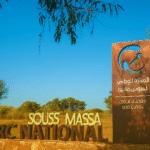




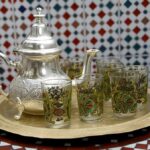


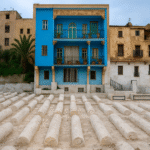
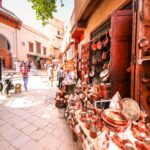
Some genuinely interesting info , well written and generally user genial.
I loved up to you’ll obtain carried out right here. The sketch is tasteful, your authored subject matter stylish. nonetheless, you command get got an edginess over that you wish be turning in the following. sick undoubtedly come more before again as precisely the similar just about very often inside case you protect this hike.
I got good info from your blog